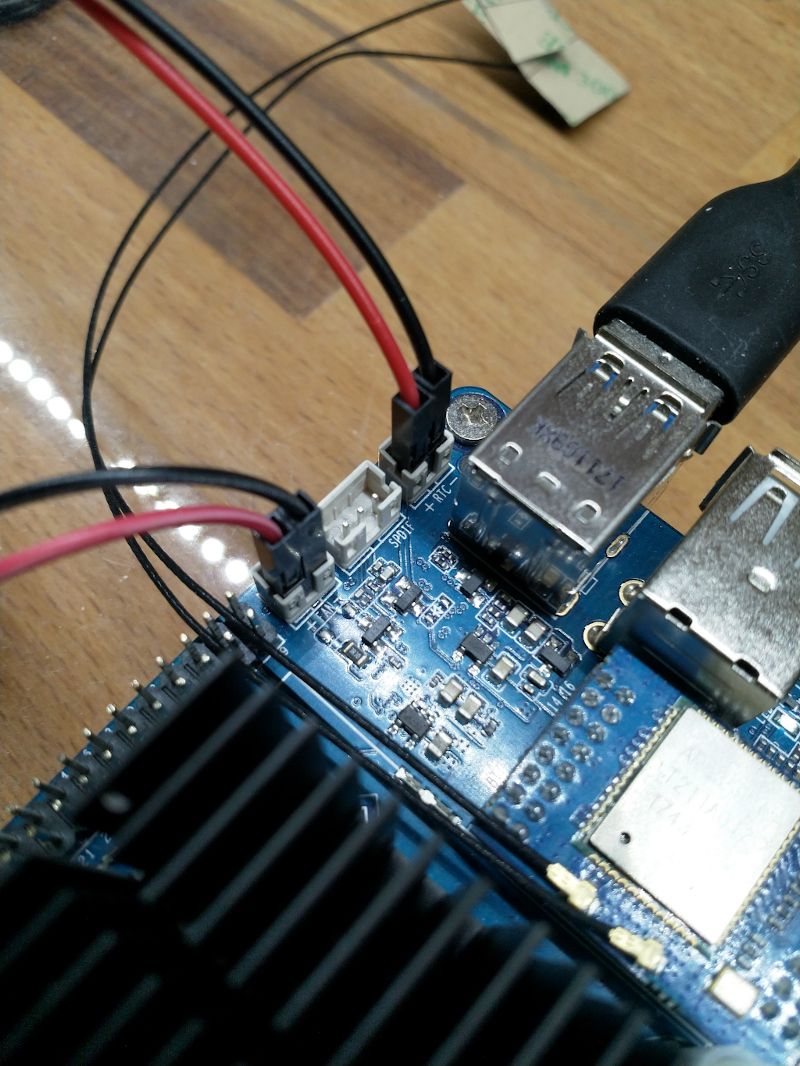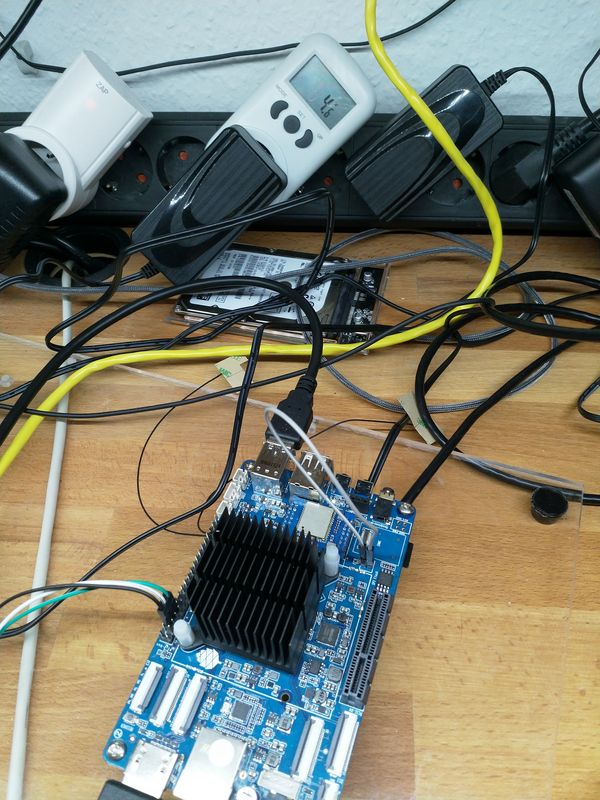Infrarot Empfänger
-
Wie ich berichtet hatte, war beim Preproduction SOC(v2.0) der IR-Empfänger lose im Paket mit einem Informationszettel, das wohl auf dem SOC was vertauscht sei.
Nun ist beim ROCKPro v2.1 kein Empfänger dabei, nur der Anschluss auf dem SOC. Ich habe da mal beim Chef (tllim) nachgefragt.
- Den IR-Empfänger liefert Pine64 nur mit der IR Fernbedienung aus.
Auf meine Nachfrage warum, kam folgendes
- Manche Anwender schließen an den Anschluss nur Drähte an um den Empfänger etwas weiter entfernt zu montieren.
- Manche Anwender schließen an den Anschluss einen 433 MHz Empfänger an.
- Manche Anwender schließen an diesen Anschluss Sicherheits Chips an (?)
Das alles macht Sinn und sollte für die meisten Anwender auch kein Problem sein, ich denke es ist aber gut wenn man das vorher weiß!
Quelle:
(19:39:05) frankm: Hi tllim, i got my rpv2.1 and i am missing IR receiver, in first batch it was in the package. And i remember that you wrote, that it will be on the board in v2.1 (?)
(19:39:08) frankm: And thank you, that's a great board
(19:40:36) tllim: Hi Frankm, the IR receiver always accompany with IR remote control, not the main board. The RPro64 v2.o include IR receiver due to the board layout error
(19:41:23) frankm: Ok, i understand. Thank you for the info.
(19:41:31) tllim: welcome
(19:41:51) frankm: But why is not he soldered?
(19:42:34) tllim: this due to below several reasons:
(19:43:09) tllim: 1. Some people interest to wire out the IR to match with their case design
(19:43:59) tllim: 2. Some people use the IR receiver slot to put wireless RF receiver
(19:44:38) tllim: 3. Some people use the IR slot for security chip
(19:44:54) frankm: ok, makes sense thanks
thanks
(19:45:04) tllim:
-
-
-
-
-
-
-
-
Mainline Kernel 4.20.x
Verschoben Images

